Bwindi Impenetrable Forest Gorilla Trekking Guide
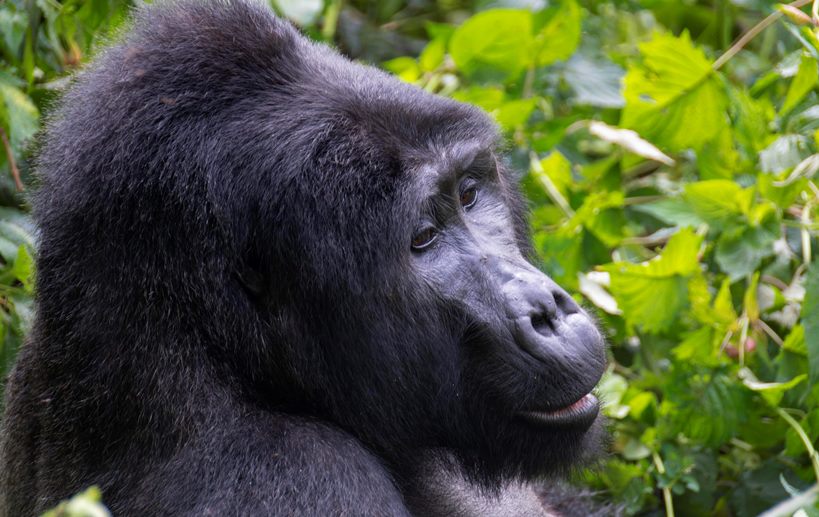 Bwindi Impenetrable Forest – Gorilla Trekking and Conservation Efforts
Bwindi Impenetrable Forest – Gorilla Trekking and Conservation Efforts
Welcome to the Bwindi Impenetrable Forest, a magical destination in southwest Uganda and a must-visit for nature lovers, hiking enthusiasts, and those seeking the unique experience of Bwindi Forest Gorilla Trekking. Located about an 8-10 hour drive from Kampala, the capital, this 331 km² (128 mi²) ancient rainforest is not only a UNESCO World Heritage Site for its rich and unique ecosystem but also the premier location for an unforgettable gorilla trekking adventure. Whether you’re here to witness the majestic mountain gorillas in their natural habitat or to explore the diverse flora and fauna, Bwindi’s breathtaking beauty and ancient landscapes offer an outdoor experience like no other.
In 2019, CNN recognized Bwindi Impenetrable Forest as one of the best hiking trails in the world, and it’s easy to see why. This forest is a treasure trove for hikers, bird watchers, and anyone who appreciates the wonders of nature. The diversity of plants and animals here is incredible, and it’s different from anything you might have seen before.
Explore Bwindi Forest Gorilla Trekking
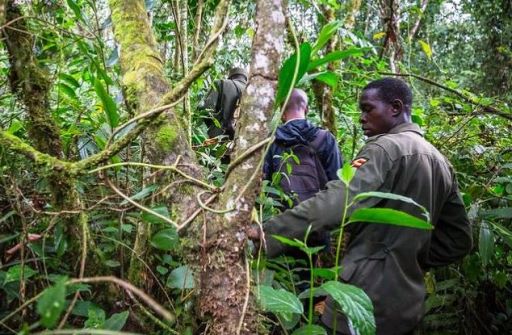 The Bwindi Impenetrable Forest is renowned for offering a remarkable gorilla trekking experience, allowing visitors the rare opportunity to observe mountain gorillas in their natural environment. This encounter is not only extraordinary but deeply moving, offering a unique connection with one of the planet’s most endangered species. Explore the 8 Crucial Planning Steps for your Ultimate Gorilla Trek in Uganda.
The Bwindi Impenetrable Forest is renowned for offering a remarkable gorilla trekking experience, allowing visitors the rare opportunity to observe mountain gorillas in their natural environment. This encounter is not only extraordinary but deeply moving, offering a unique connection with one of the planet’s most endangered species. Explore the 8 Crucial Planning Steps for your Ultimate Gorilla Trek in Uganda.
While gorilla trekking is the highlight, Bwindi Impenetrable Forest’s allure extends beyond these magnificent creatures. The forest, recognized as Africa’s premier birding destination, invites visitors to explore its rich biodiversity and cultural heritage. Although the forest is home to a variety of hiking trails, the focus here is primarily on the gorilla trekking paths, which weave through the lush, ancient forest. These trails are historically significant, having been used for centuries by the local communities, including the Batwa Pygmy people, who have coexisted harmoniously with the forest while leaving a minimal ecological footprint. Explore the top 9 things to do and see in Bwindi Impenetrable Forest.
Engaging in gorilla trekking in Bwindi Impenetrable Forest is more than an adventure; it’s a commitment to sustainable and responsible tourism. This practice plays a crucial role in conserving the forest’s unique biodiversity and supports the development of local communities. By choosing to trek in Bwindi, you contribute to a greater cause, emphasizing the preservation of our planet and its diverse cultures.
Get ready to explore the best of Uganda’s natural beauty in Bwindi Impenetrable Forest. Whether you’re here for a day or planning to extend your stay beyond gorilla trekking, the forest’s trails are waiting to offer you an experience like no other.
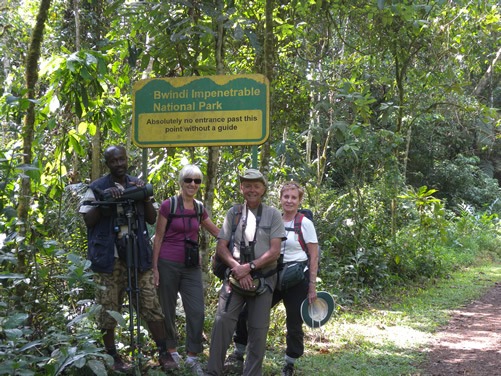
Discovering the Wonders of Bwindi Impenetrable Forest
As you embark on a hike through Bwindi Impenetrable Forest, you’re stepping into a world brimming with remarkable wildlife and stunning landscapes. Here’s a glimpse of what you might encounter on your journey:
Mountain Gorillas: This forest is a sanctuary for nearly half of the world’s remaining mountain gorillas. Joining a guided gorilla trek is a once-in-a-lifetime opportunity to observe these incredible creatures in their natural habitat.
Other Primates and Mammals
Bwindi Forest offers much more than just gorillas. It’s one of the richest natural areas in Africa, known for its wide variety of wildlife. In one part of the park, you can find Forest Elephants. These elephants are different from those in the savannah; they’re smaller and have more hair. However, they are shy and not often seen by visitors.But that’s not all. Bwindi is also home to over 120 different types of mammals. This includes 11 kinds of primates like L’Hoest’s monkeys, red-tailed monkeys, blue monkeys, black and white colobus, baboons, and many chimpanzees. Besides these primates, the forest also has forest duiker antelopes, bushbuck antelopes, and more. Each animal adds to the incredible diversity that makes Bwindi Forest so special.
Bird Watching Heaven
With over 350 bird species, including some endemic to the area, bird watchers will be in paradise. Keep an eye out for the African green broadbill, the yellow-eyed black flycatcher, and the African emerald cuckoo, among others.
Butterflies Galore 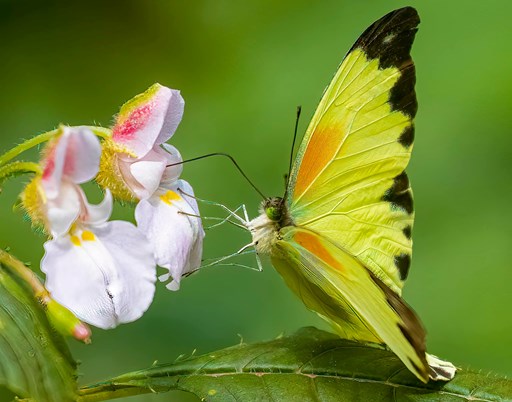
The forest is a haven for butterfly enthusiasts, hosting over 200 species, including rare and endemic varieties. These colorful creatures add a layer of magic to the forest ambiance.
Rich Plant Life: Bwindi’s biodiversity is also evident in its plant life. Over 1,000 plant species thrive here, including the African yellowwood and brown mahogany, bamboo forests, and Afro-Montane plants.
Bwindi Forest: A Haven for Reptiles and Amphibians
In addition to its mammals and primates, Bwindi Forest is also a sanctuary for a fascinating array of reptiles and amphibians. The park is home to 27 species of frogs, each unique in its appearance and habitat. Alongside these amphibians, the forest shelters various species of chameleons and geckos. These reptiles, known for their distinctive features and behaviors, add another layer of diversity to Bwindi’s rich ecosystem. Many of these species are endangered, making Bwindi Forest an important refuge for their survival and conservation. This incredible variety of frogs, chameleons, and geckos further highlights Bwindi as a biodiversity hotspot in Africa.
Scenic Views: The forest’s rugged terrain and lush vegetation open up to spectacular views, including vistas of the Virunga and Rwenzori Mountains. CNN has celebrated Bwindi Impenetrable Forest as one of the most beautiful places in the world.
It’s important to remember that wildlife sightings can never be guaranteed. The animals in Bwindi are wild and have the freedom to roam and hide in the dense forest. However, the sheer diversity and uniqueness of the ecosystem make every hike in Bwindi Impenetrable Forest an unforgettable experience, filled with the potential for awe-inspiring encounters.
Gorilla Trekking Tourism and Conservation in Uganda’s Bwindi Impenetrable Forest
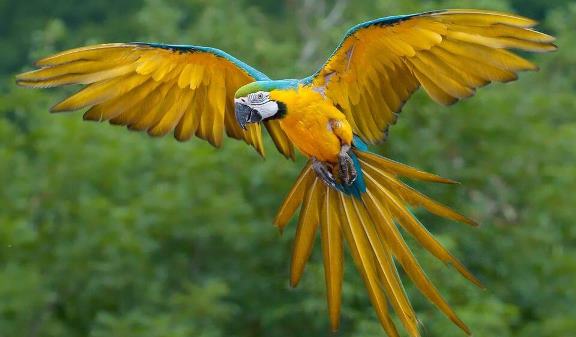 Bwindi Impenetrable Forest, a haven of biodiversity, is globally renowned for its significant population of mountain gorillas. As of the count between May and November 2018, the forest is home to over 459 of the estimated 1,063 critically endangered mountain gorillas worldwide. This makes Bwindi one of the most crucial habitats for the conservation and protection of these majestic creatures. Read more about the World’s Surviving Gorillas.
Bwindi Impenetrable Forest, a haven of biodiversity, is globally renowned for its significant population of mountain gorillas. As of the count between May and November 2018, the forest is home to over 459 of the estimated 1,063 critically endangered mountain gorillas worldwide. This makes Bwindi one of the most crucial habitats for the conservation and protection of these majestic creatures. Read more about the World’s Surviving Gorillas.
Protection Efforts in Bwindi Impenetrable Forest:
Longstanding Commitment and Community Involvement:
The conservation efforts in Bwindi Impenetrable Forest date back to 1964, demonstrating a deep-rooted commitment to preserving this unique species. The forest’s proximity to human populations has led to innovative conservation strategies. Notably, local communities receive 10% of the government’s receipts from gorilla trekking permits. This initiative ensures that the communities are stakeholders in the conservation process, incentivizing them not to disturb Bwindi and its mountain gorillas. Such efforts have helped Bwindi to maintain its unique status as a world of its own, with steep ridges and dense forests that are a bio-diverse miracle. The transformation from the Impenetrable Forest Reserve under colonial administration in 1932 to Bwindi National Park in 1991 under President Museveni’s government further solidified these efforts.
Increasing Gorilla Populations and Pioneering Tourism:
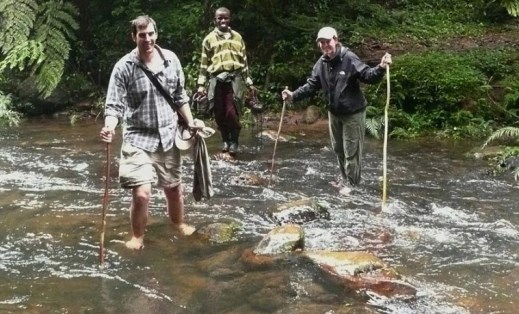 Since being designated as Bwindi National Park in 1991, the mountain gorilla population in Bwindi Impenetrable Forest has been steadily increasing, a testament to the hard work of many environmental and wildlife conservation groups. One of the pioneers in gorilla conservation and tourism was Walter Baumgartel, who lived in Kisoro. Baumgartel advocated for gorilla conservation and recognized early the benefits that tourism could bring to the area. He owned the “Travellers Rest Inn,” frequented by Dian Fossey, the famed primatologist and author of “Gorillas in the Mist.” Baumgartel’s insights, particularly in his book “Up Among the Mountain Gorillas,” highlight the early struggles to protect the mountain gorillas and the gradual shift to allow safe and close encounters with these majestic animals, debunking the myth of danger associated with such experiences.
Since being designated as Bwindi National Park in 1991, the mountain gorilla population in Bwindi Impenetrable Forest has been steadily increasing, a testament to the hard work of many environmental and wildlife conservation groups. One of the pioneers in gorilla conservation and tourism was Walter Baumgartel, who lived in Kisoro. Baumgartel advocated for gorilla conservation and recognized early the benefits that tourism could bring to the area. He owned the “Travellers Rest Inn,” frequented by Dian Fossey, the famed primatologist and author of “Gorillas in the Mist.” Baumgartel’s insights, particularly in his book “Up Among the Mountain Gorillas,” highlight the early struggles to protect the mountain gorillas and the gradual shift to allow safe and close encounters with these majestic animals, debunking the myth of danger associated with such experiences.
These protection efforts have not only contributed to the conservation of the gorillas but have also played a crucial role in shaping Uganda’s ecotourism, turning Bwindi Impenetrable Forest into a globally recognized conservation success story.
Bwindi Forest Habituated Gorilla Families:
- In Bwindi Impenetrable Forest, about 25 habituated mountain gorilla families are open to tourism. This habituation process allows these gorillas to become accustomed to human presence, enabling controlled tourism that supports conservation efforts without significantly disturbing the gorillas’ natural behavior.
- It’s important to note that these families are distinct from those found in Mgahinga Gorilla Park, another important gorilla habitat in Uganda.
Gorilla Trekking Hiking Experience in Bwindi Impenetrable Forest
Key Considerations When Planning Your Gorilla Trek
- Gorilla Permit First: Secure your gorilla permit before booking a lodge. This determines the trekking area and helps in choosing a conveniently located lodge.
- Travel Time: Avoid long travel times between your lodge and the gorilla trekking start point.
Choosing the Right Lodge for Your Gorilla Trek in Bwindi Impenetrable Forest
When planning a gorilla trek in Uganda’s Bwindi Impenetrable Forest, one crucial aspect is choosing a lodge that aligns with the location of your gorilla permits. Here’s a guide to help you make an informed decision:
Understanding Bwindi’s Layout and Lodging Options
Bwindi Forest is divided into four main trekking areas, each with its own habituated gorilla families. These are:
- Buhoma Area
- Located in the northern part of the forest, this sector is a hotspot for gorilla trekking. Home to the Mubare, Habinyanja, and Rushegura gorilla groups, the Buhoma trek offers lush scenery and a chance to witness these majestic creatures up close.
- Lodges: Offers the most choices. Examples include Sanctuary Gorilla Forest Camp, Buhoma Lodge, and Mahogany Springs.
- Ruhija Area
- In the eastern part of Bwindi, Ruhija is known for its bamboo forests and breathtaking landscapes. Gorilla groups here include Bitukura and Oruzogo. Birdwatchers will also find this sector particularly rewarding.
- Lodges: Bakiga Lodge and Ruhija Gorilla Safari Lodge are popular choices in this area.
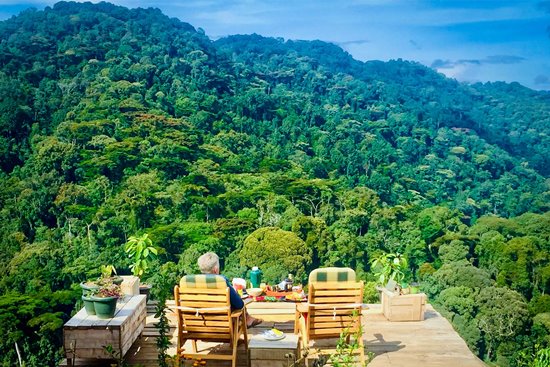
- Rushaga Area
- Located in the south, Rushaga is home to the Nshongi, Mishaya, and Bweza gorilla groups. The trek is challenging but rewarding, with steep slopes and dense undergrowth for an enriching experience.
- Lodges: Options like Four Gorillas Lodge and Rushaga Gorilla Camp offer excellent stays.
- Nkuringo Area
- Also in the south, Nkuringo is renowned for its namesake gorilla group. The hike here offers stunning views of the Virunga Volcanoes and the picturesque landscape of Bwindi. It’s a challenging trek but well worth the effort for the incredible encounter with gorillas.
- Lodges: Consider Clouds Mountain Gorilla Lodge for a luxurious experience.
Tips for a Smooth Experience
- Work with Reputable Operators such as Lifetime Experience Safaris: They ensure your lodge matches your trekking area.
- Consider Travel Time: A lodge closer to your trekking start point means more rest and less travel.
- Check Availability: Popular lodges book up fast, especially during peak seasons.
By carefully selecting your lodge based on the gorilla group you’ll be tracking, you can maximize your experience in Bwindi Impenetrable Forest, ensuring comfort, convenience, and an unforgettable gorilla trekking adventure. Please visit our dedicated page for a deeper dive into Bwindi Midrange and Luxury accommodations.
The Right Gorilla Trekking Wear and Gear Packing List 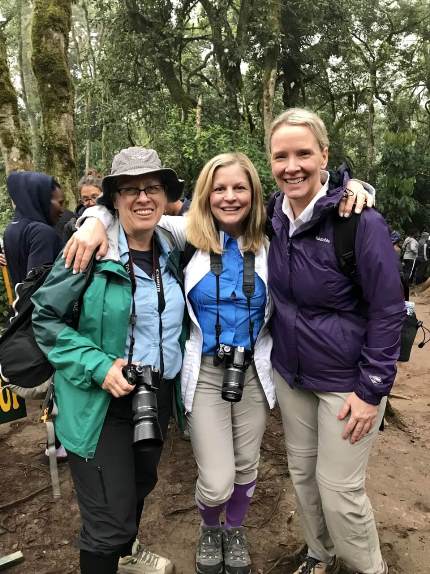
For a successful gorilla trekking adventure, wearing appropriate attire and carrying the right gear is essential. Sturdy hiking boots with good ankle support and thick socks are vital to prevent blisters. Layer your clothing to adapt to changing temperatures, and choose long-sleeved shirts and lightweight pants for protection against insects and rough vegetation. A waterproof jacket or poncho is a must for rain, while a hat, sunglasses, and sunscreen shield you from the sun. Also, pack a small backpack with essentials like water, snacks, and a camera.
In rugged terrains like Bwindi Impenetrable Forest or Mgahinga Gorilla Park, the right clothing and gear safeguard against scratches and bruises while helping you traverse muddy, steep trails. Remember, practicality trumps fashion in gorilla trekking. Suitable attire enhances your trekking experience, allowing you to focus on the incredible encounter with the mountain gorillas rather than any discomfort. Read more about the gorilla trekking safari packing list.
Preventing Wasp Attack on a Gorilla Trek
When trekking for gorillas in Uganda, it’s important to know how to avoid wasp attacks, even though they are rare. To stay safe, follow these tips:
- Prepare properly in the morning: Shower using unscented soap to reduce body odor that attracts wasps and apply insect repellent, preferably a Deet-based product.
- Choose the right attire: Wear long trousers and shirts, a hat, and boots with thick socks (tuck trousers into socks). Opt for neutral colors like khaki and avoid brightly colored, flower-patterned clothes. If you have long hair, keep it tied back in a ponytail.
- Stay vigilant on the trek: Keep alert for wasp nests and their flight paths. Inform your guide immediately if you spot many wasps or a nest. Avoid wasp nests since disturbing them can trigger a swarm attack.
- Manage food and drink wisely: Stick to bottled water and avoid bringing sugary items that attract wasps. Be cautious with your packed lunch to ensure it doesn’t attract them.
In case of a wasp attack, don’t panic. Wasps usually attack only if their nest is disturbed. Avoid swatting at them, as this can worsen the situation. If attacked, move quickly through dense vegetation, covering your face with your shirt. Seek medical help if you’re stung 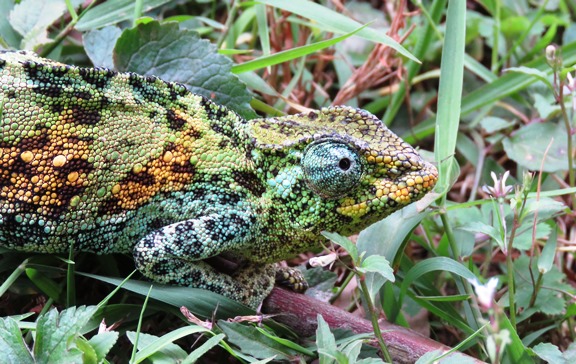 multiple times, feel sick, or have an allergic reaction. It’s good to carry an epinephrine auto-injector if you’re allergic. Remember, your guides are trained to ensure your safety and avoid areas known for wasps. Bwindi Community Hospital is equipped to handle emergencies, including wasp stings.
multiple times, feel sick, or have an allergic reaction. It’s good to carry an epinephrine auto-injector if you’re allergic. Remember, your guides are trained to ensure your safety and avoid areas known for wasps. Bwindi Community Hospital is equipped to handle emergencies, including wasp stings.
Getting to Bwindi Impenetrable Forest:
Driving from Entebbe: Located in the southwest of Uganda, Bwindi Impenetrable Forest can be easily accessed by air or road. Most travelers arrive in Uganda via the Entebbe International Airport, the largest airport in the country, located in Entebbe in central Uganda. If you’re coming from Entebbe International Airport, expect a drive of about 9 hours to reach Bwindi Impenetrable Forest. To make this long journey more enjoyable, you can break it up with stops at different parks and activities along the way.
Flying Directly to Bwindi:
For those with limited time, a flying safari is a convenient option. AeroLink Safari Airline offers daily flights from Entebbe to two airstrips in the Bwindi region – Kisoro and Kihihi. Both are conveniently located near Bwindi Impenetrable National Park, with Kisoro serving the southern region and Kihihi near the Buhoma area. These flights take approximately 1½ hours and are becoming an increasingly popular way to access the forest quickly and comfortably.
Flying into Kigali and Driving: Another convenient option is to fly into Kigali International Airport in Rwanda and then drive to Bwindi Forest. This route is shorter, taking about 4 hours to reach the southern parts of Bwindi, like Rushaga or Nkuringo, where some of the best gorilla trekking in Uganda can be found. 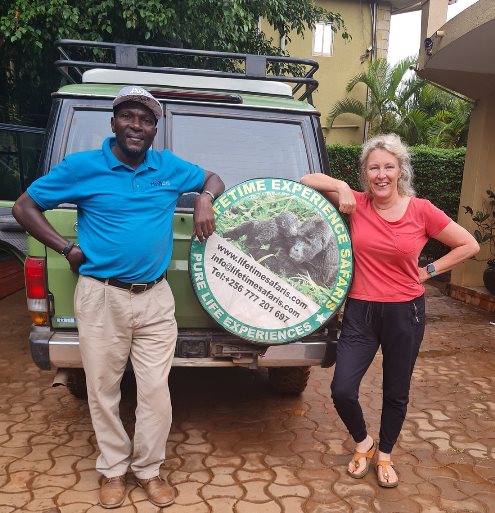
Here are some helpful links that you might want to check out:
- The 8 Crucial Steps for Planning Your Uganda Gorilla Trek Safari
- Discover Uganda’s Chimpanzee Kingdoms & Beyond.
- Uganda in Best of the World Trips – 2013, National Geographic Society recommends!
- Why You Should Consider Uganda for Your Gorilla Trekking Safari
- Ultimate Guide to Tipping and Daily Costs on a Ugandan Safari
- Explore our Mini Gorilla Safari Itineraries
- Explore our Multi-day Gorilla Safari Itineraries
- 3-Day Gorilla Trekking Safari in Uganda’s Bwindi
- 12-Day Pearl of Africa Safari
- 10-Day Big 7 African Experience Uganda Safari
- 5-Day Luxury Gorilla-Chimpanzee Habituation Experience Safari
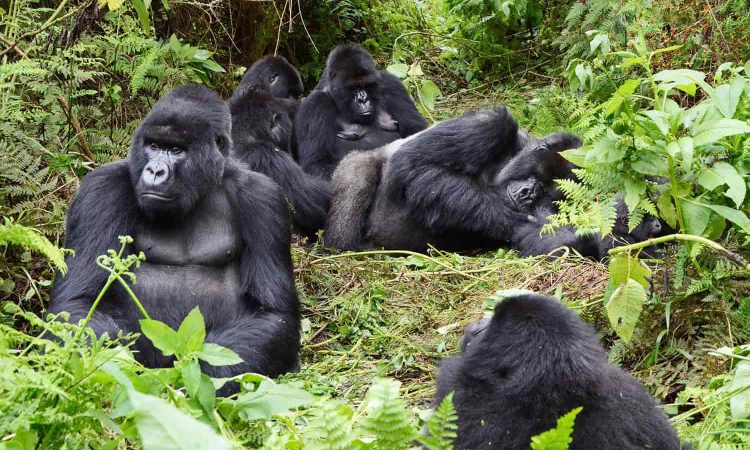 Gorilla trekking in Bwindi Impenetrable Forest stands as a testament to both adventure and conservation. Here are two key points about this extraordinary experience:
Gorilla trekking in Bwindi Impenetrable Forest stands as a testament to both adventure and conservation. Here are two key points about this extraordinary experience: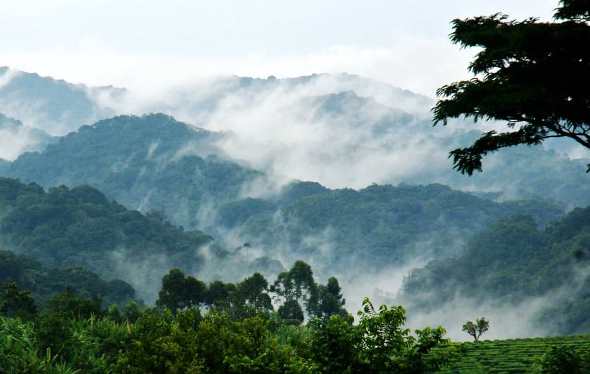 Gorilla trekking in Bwindi Impenetrable Forest uniquely combines adventure and conservation. This once-in-a-lifetime experience not only immerses visitors in the majesty of Uganda’s natural heritage but also plays a pivotal role in the protection of critically endangered mountain gorillas. The success of this sustainable tourism model showcases Uganda’s commitment to conserving its wildlife and supporting local communities, ensuring the ongoing survival of these magnificent creatures and the forest they call home.
Gorilla trekking in Bwindi Impenetrable Forest uniquely combines adventure and conservation. This once-in-a-lifetime experience not only immerses visitors in the majesty of Uganda’s natural heritage but also plays a pivotal role in the protection of critically endangered mountain gorillas. The success of this sustainable tourism model showcases Uganda’s commitment to conserving its wildlife and supporting local communities, ensuring the ongoing survival of these magnificent creatures and the forest they call home.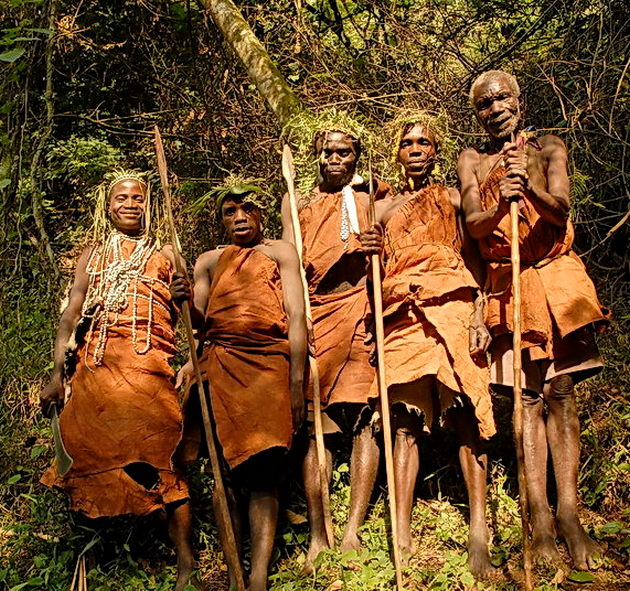 Conservation efforts have overlooked the Batwa, the forest’s indigenous people. Living as hunter-gatherers, they had a low ecological impact until displaced by Bantu ethnic groups, leading to their current status as conservation refugees. Recent court victories and efforts by some conservation groups are trying to reconcile nature conservation with the rights and dignity of the Batwa. Tourists can now learn about Batwa culture directly from them during forest visits, though their representation in conservation roles remains limited.
Conservation efforts have overlooked the Batwa, the forest’s indigenous people. Living as hunter-gatherers, they had a low ecological impact until displaced by Bantu ethnic groups, leading to their current status as conservation refugees. Recent court victories and efforts by some conservation groups are trying to reconcile nature conservation with the rights and dignity of the Batwa. Tourists can now learn about Batwa culture directly from them during forest visits, though their representation in conservation roles remains limited.